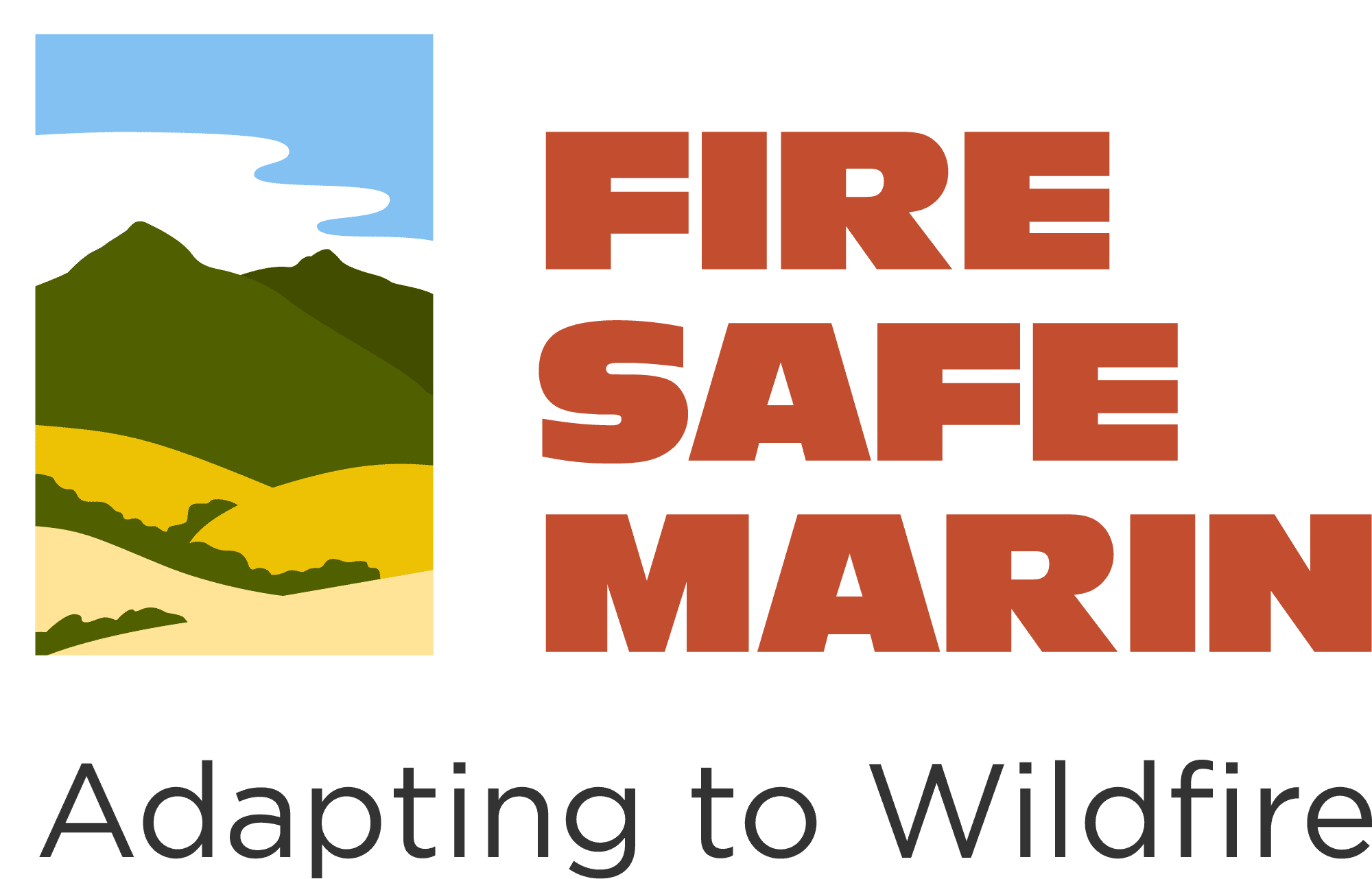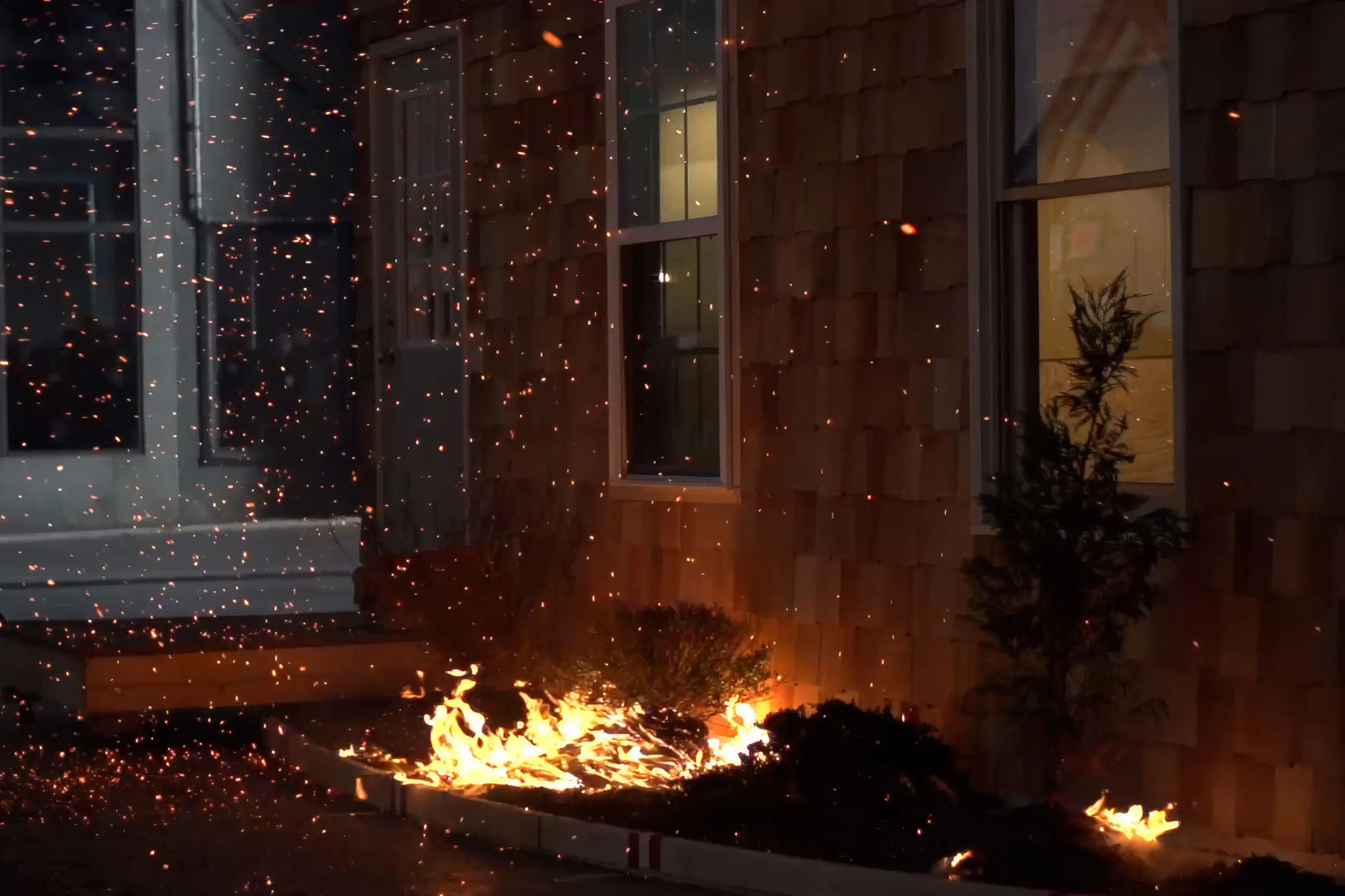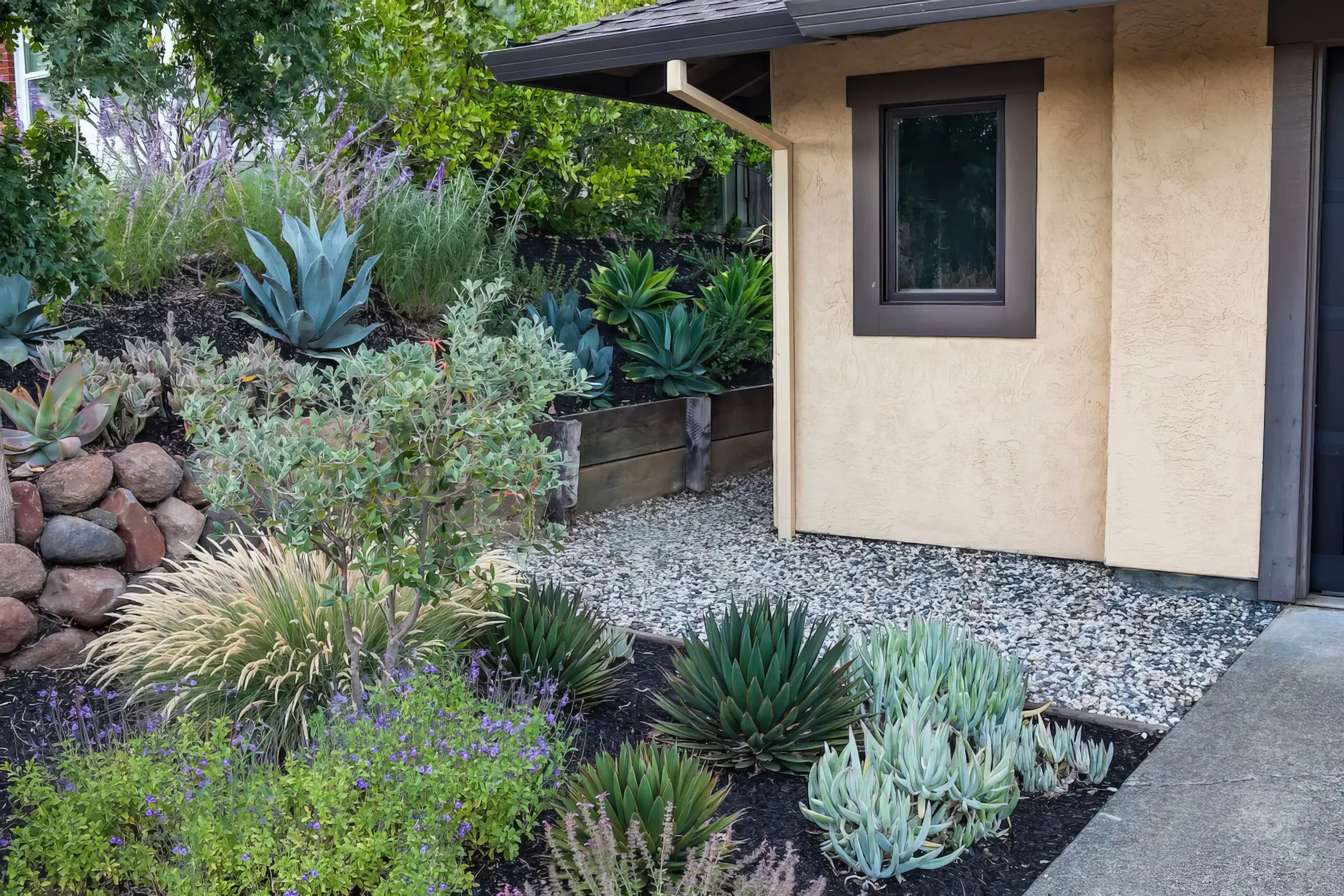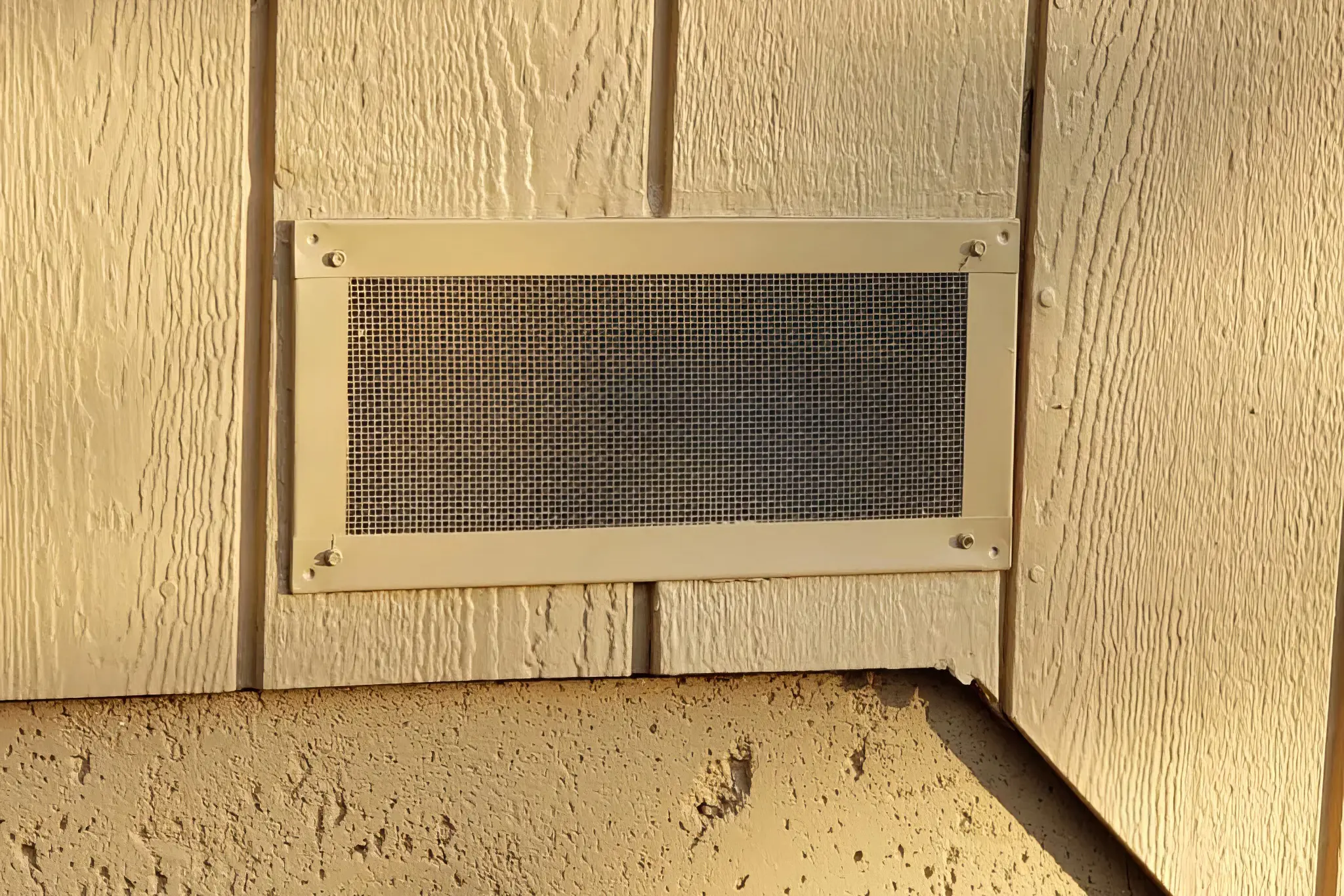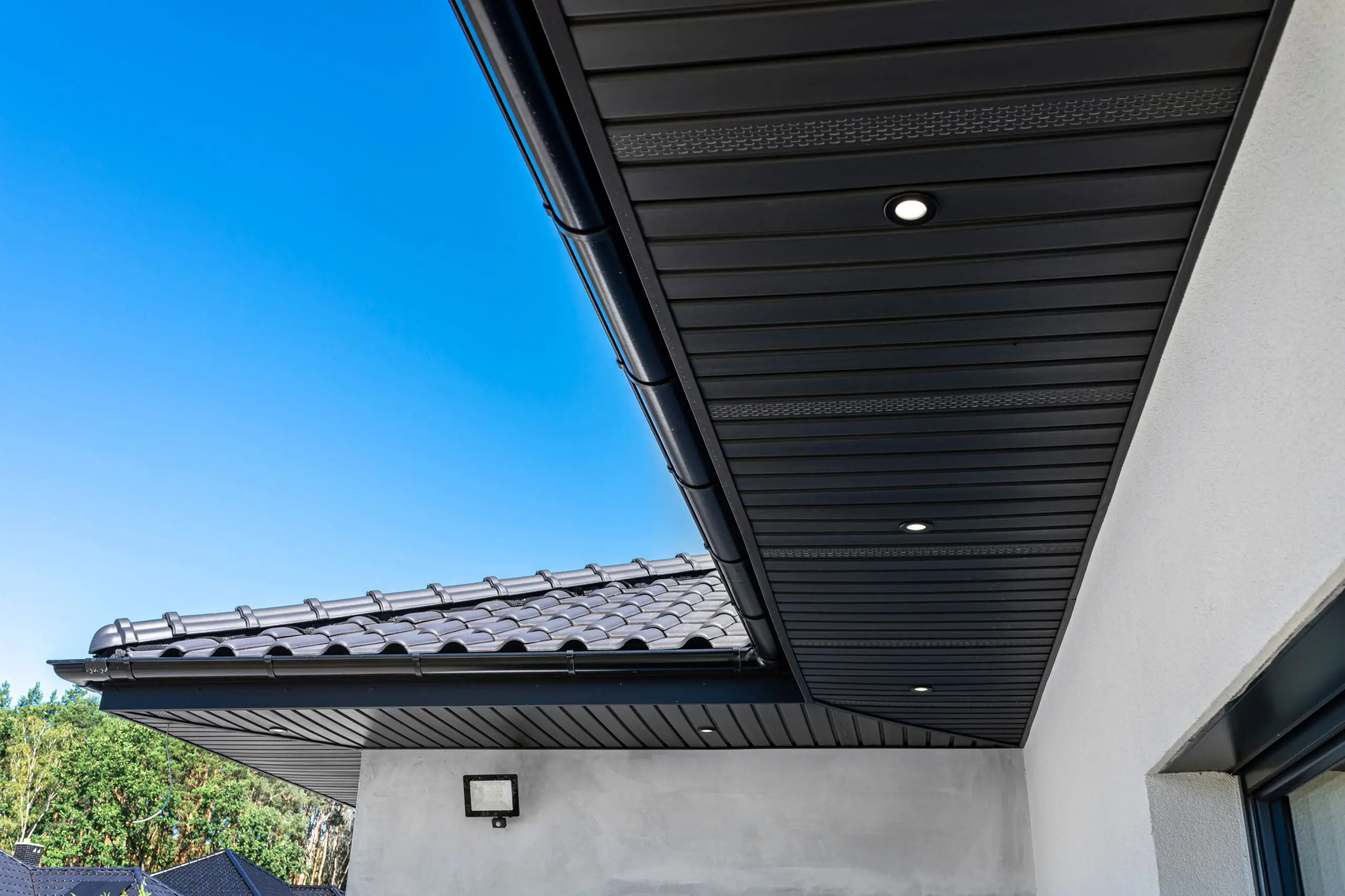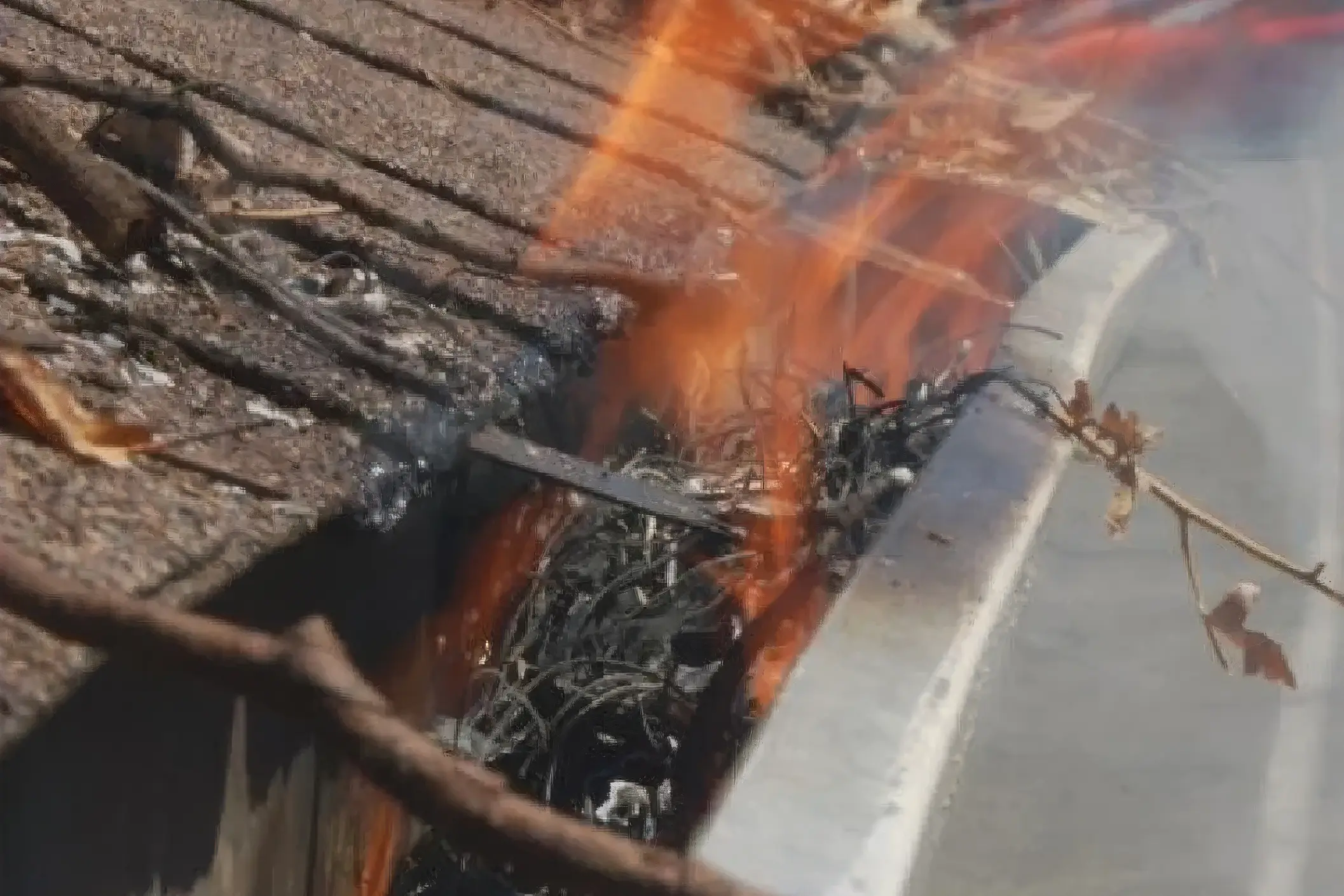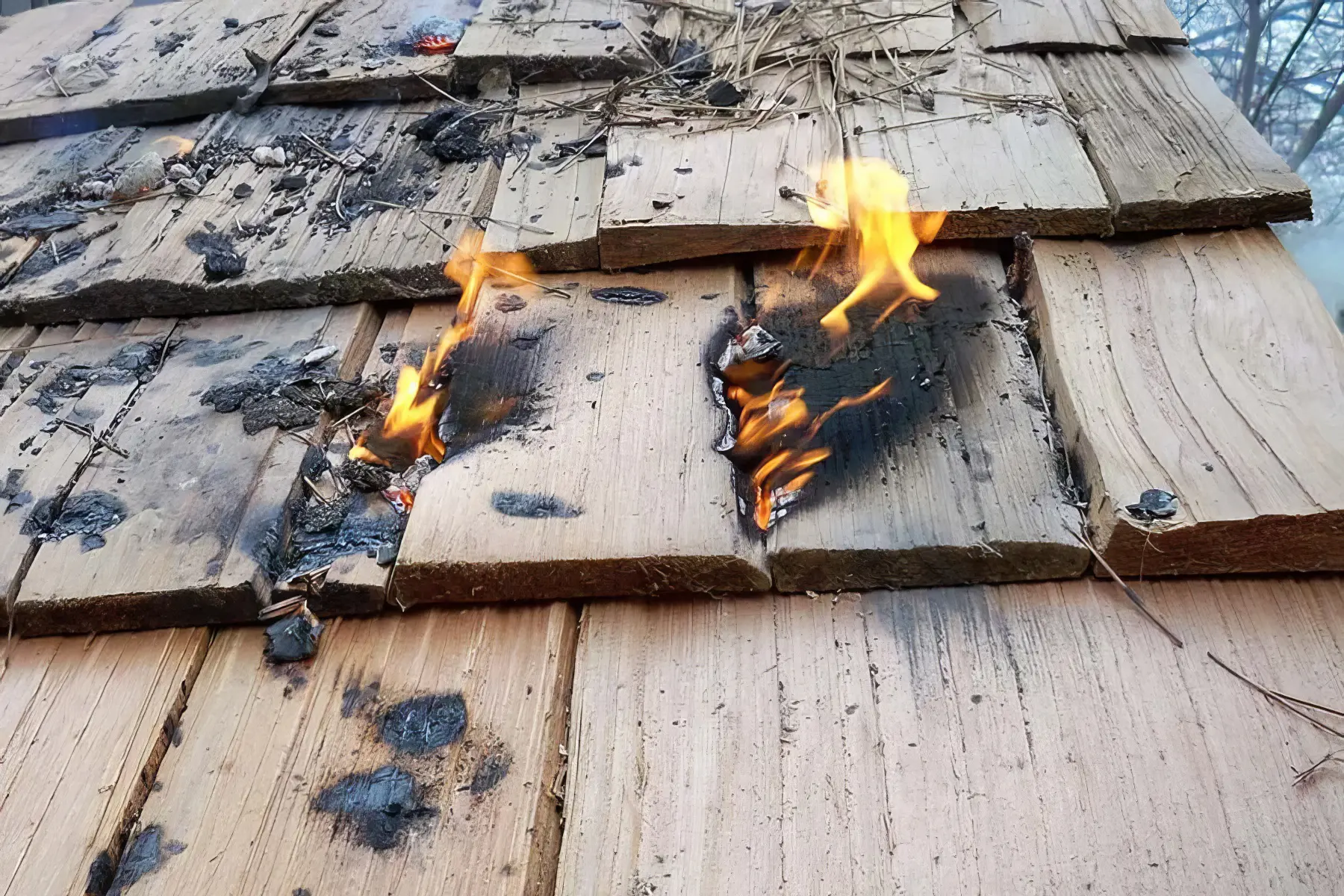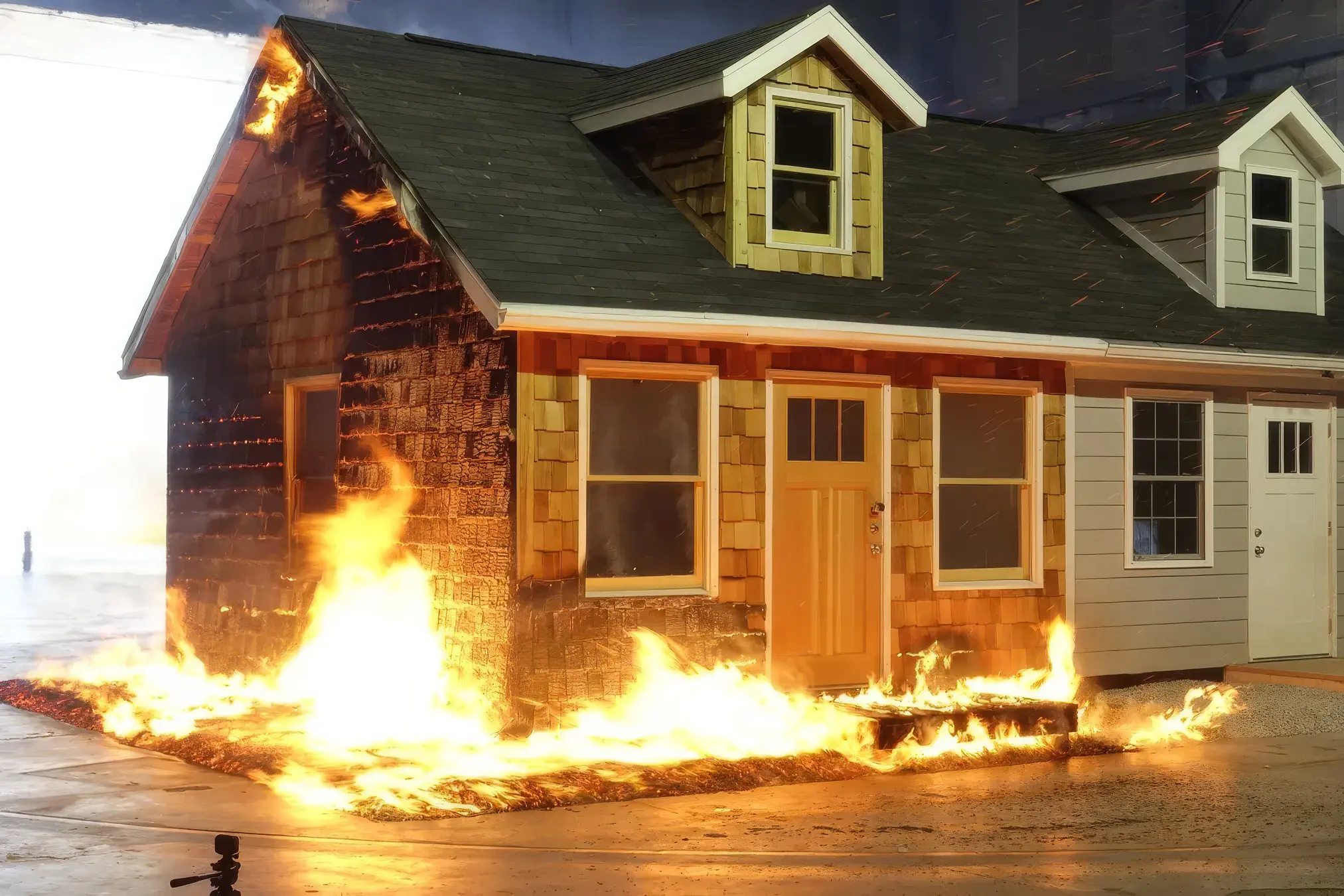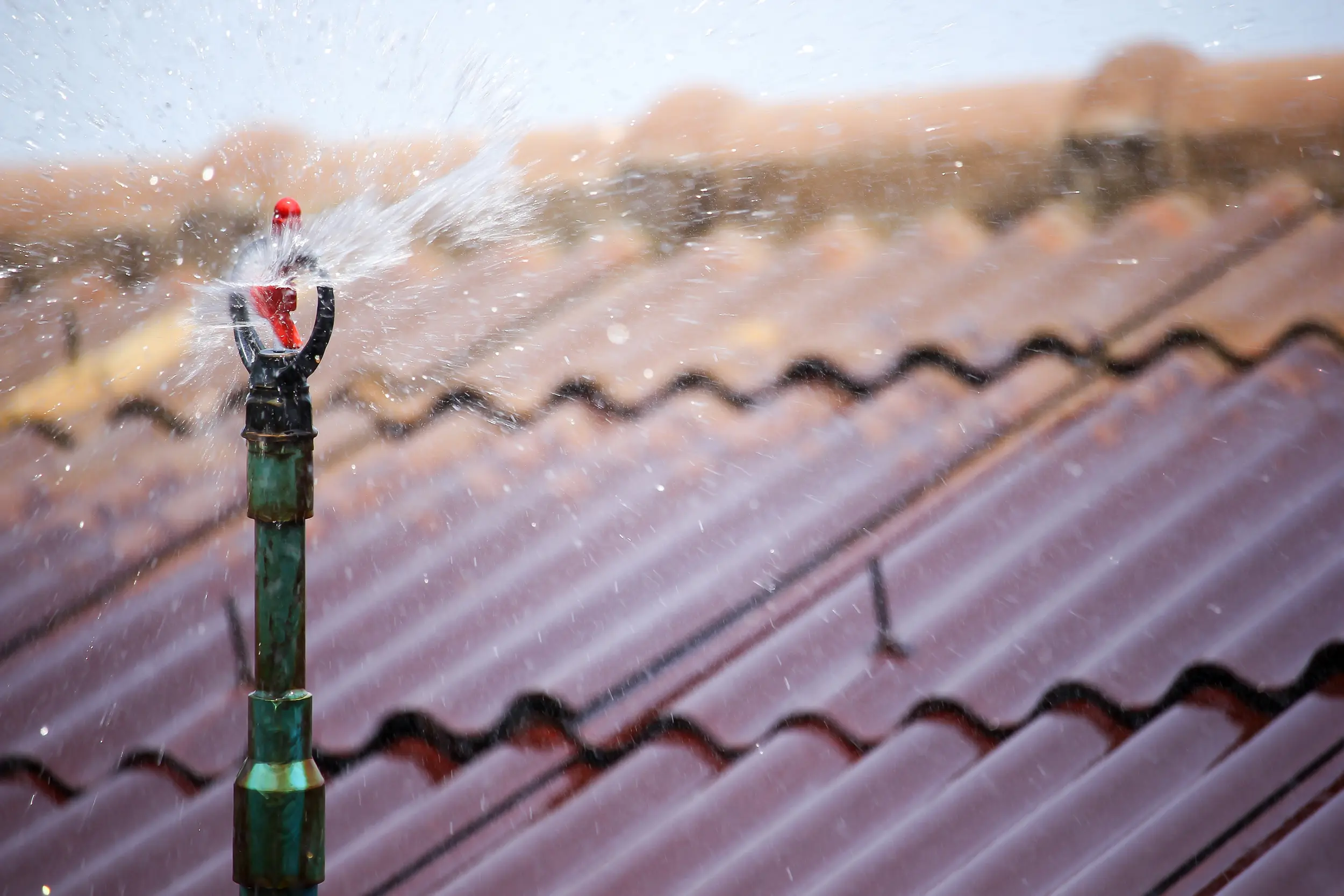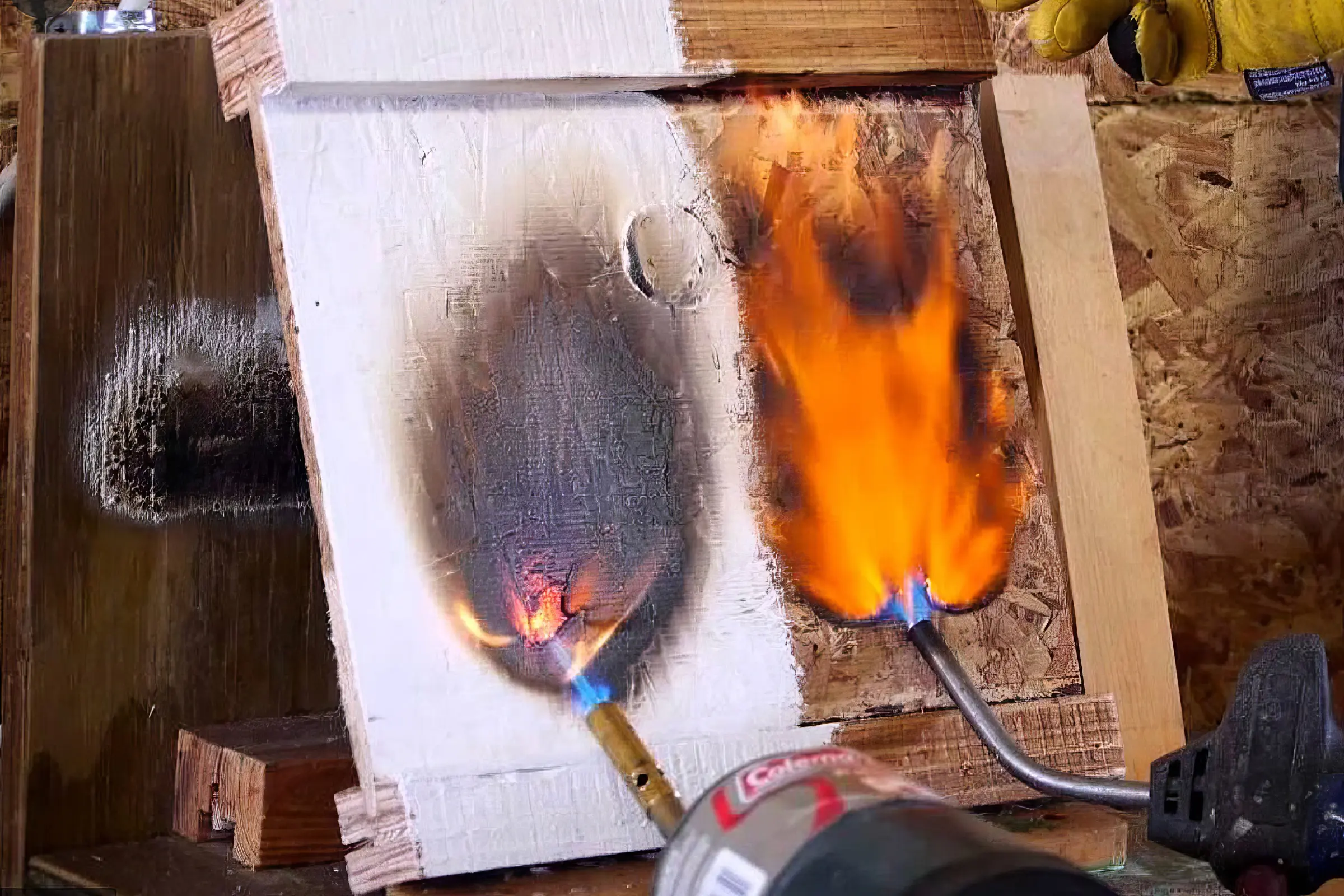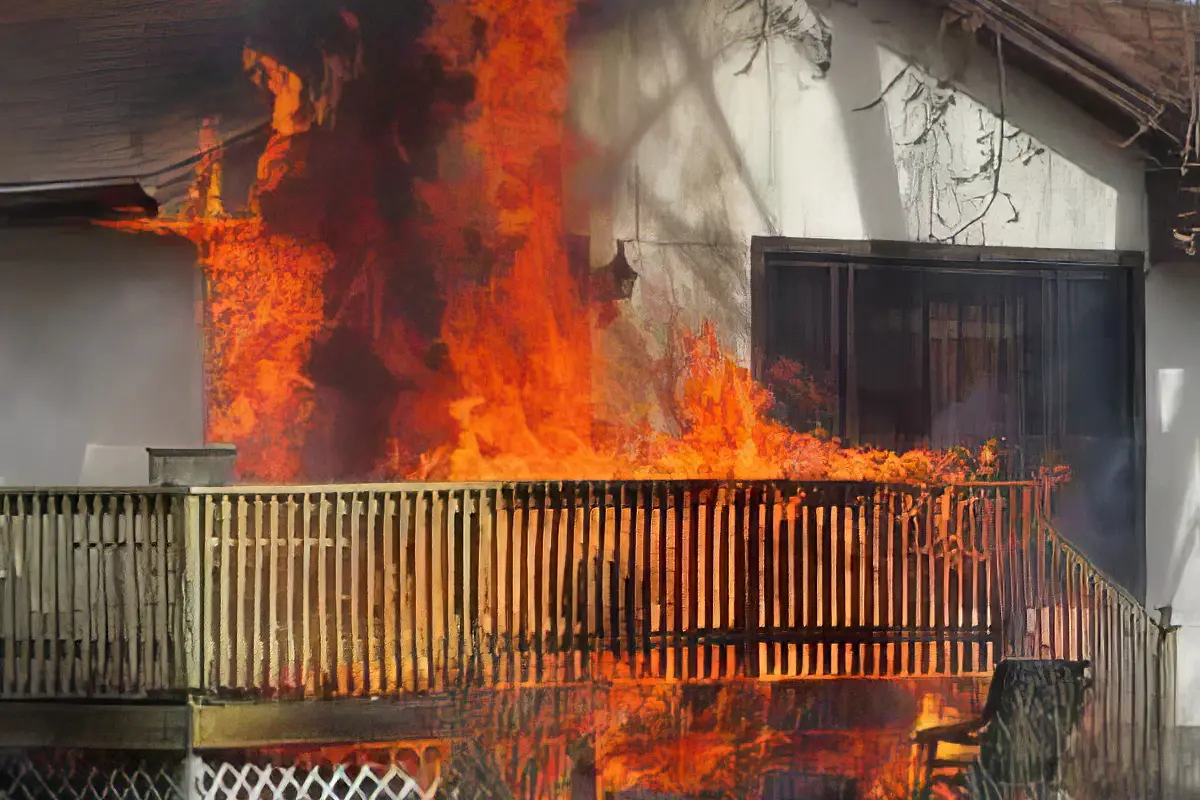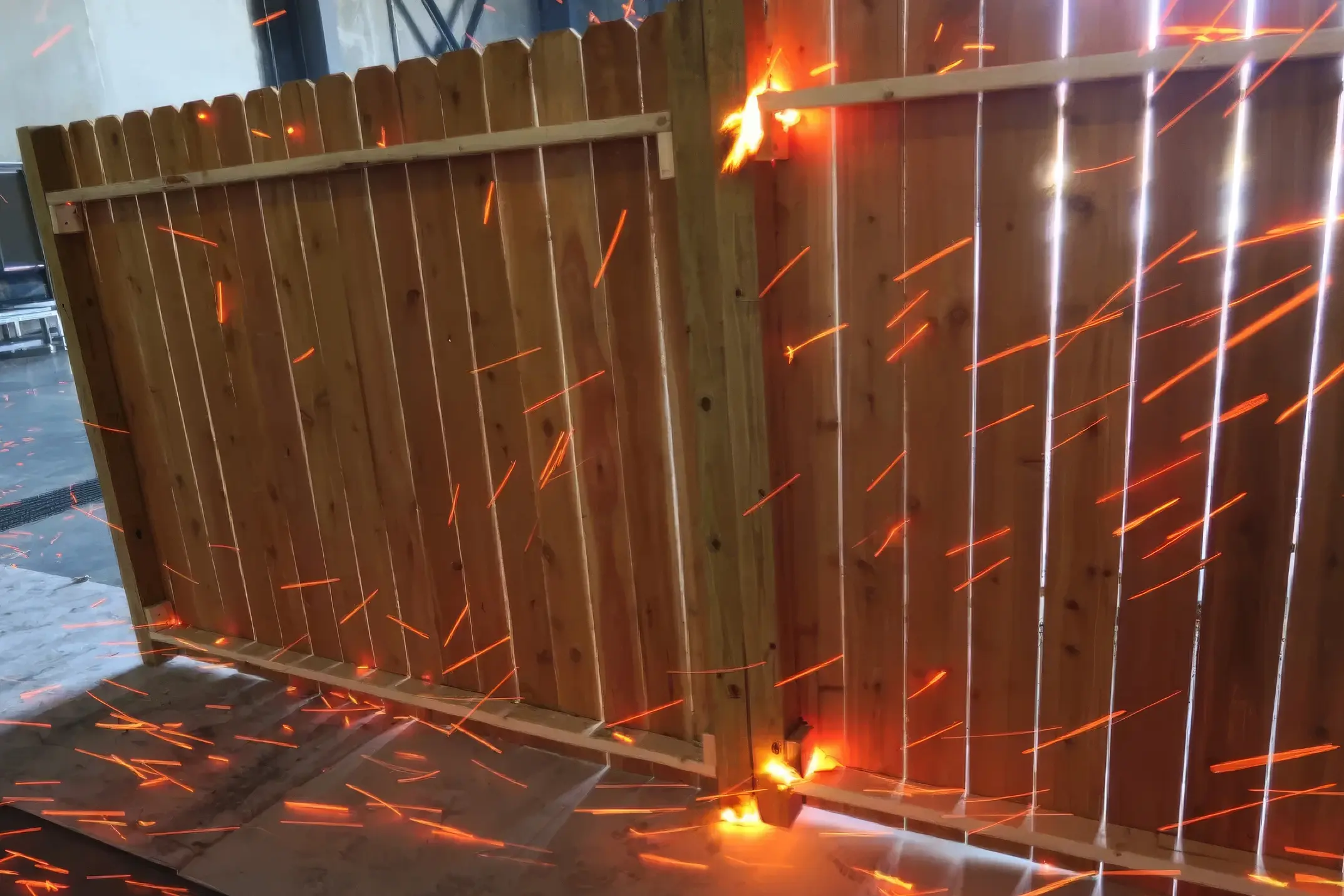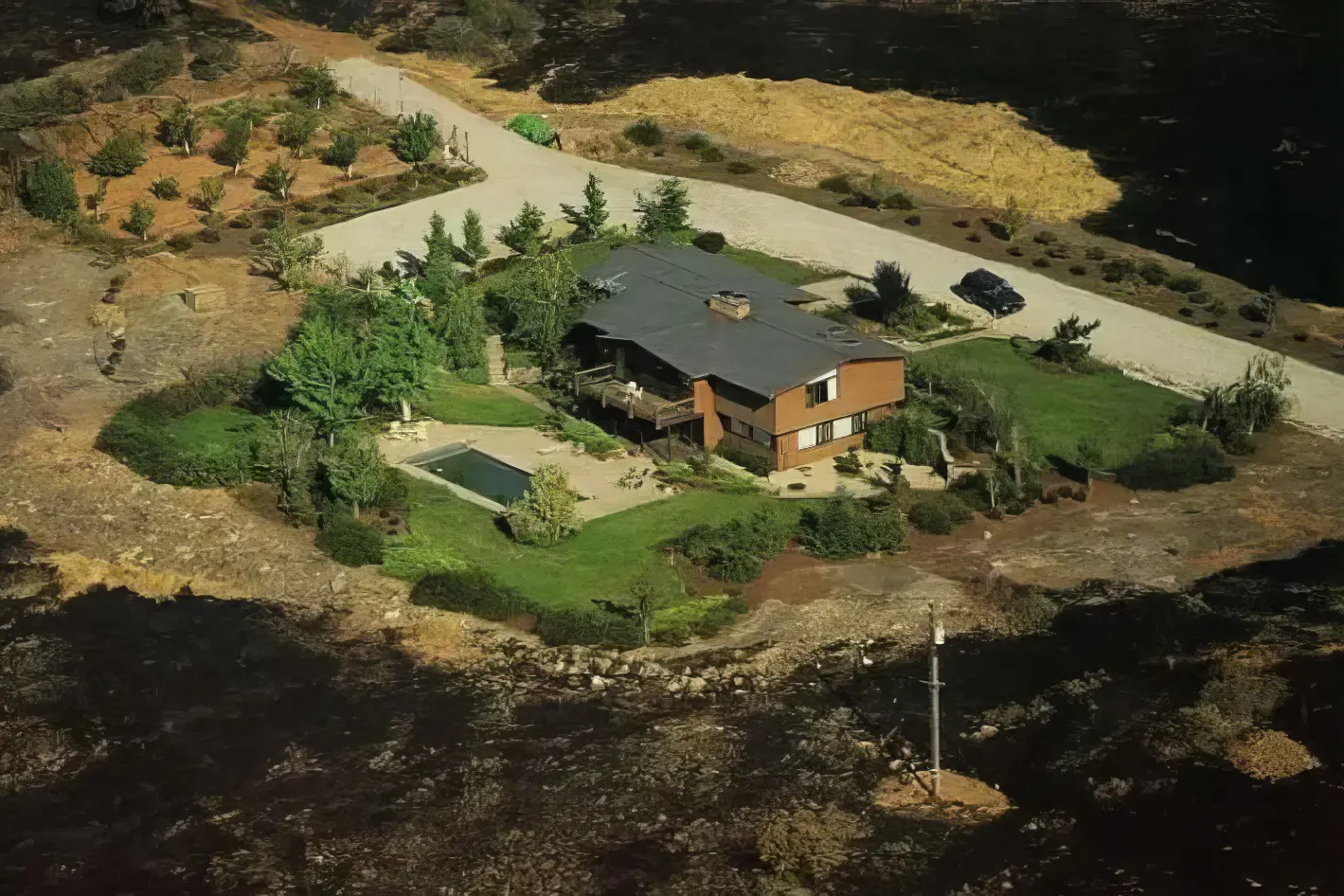IN THE EVENT OF AN EMERGENCY THIS SITE IS NOT MONITORED. FOR CURRENT INFORMATION GO TO HTTPS://EMERGENCY.MARINCOUNTY.GOV.

Harden Your Home
Make efforts to improve the chances of your home and structures withstanding ignition by wildfire. It starts with easy, small steps that can make all the difference.
How Homes Ignite
Buildings ignite during wildfires as a result of one or more of these three basic wildfire exposures: embers (also called firebrands), radiant heat, and direct flame contact. The most common source of home ignition is from embers. It is critical to ensure that your home can resist ember ignition by installing proper vents, removing combustible materials next to your home, sealing any opening into the home, enclosing soffits, installing tempered glass double pane windows and correctly installing gutters and gutter guards.
Zone 0
The area nearest your house, from 0′ to 5′, including the surfaces of the structure, decks, and steps, is the most vulnerable to embers that accumulate at the base of a wall and/or ignitions when embers ignite vegetation or other combustible materials located close to the structure. We call this “ZONE ZERO,” because it’s ground-zero when it comes to protecting your home from embers. There should be ZERO combustibles in this zone!
Vents
Vents on homes create openings for flying embers. Ember entry through vents can result in ignition of combustible materials in the attic or crawl space, and result in a building burning from the inside out. The importance of ember and flame entry into vents during wildfires has resulted in the development of commercially available vents designed to resist the intrusion of embers and flame, and recommendations for new or retrofit vents to protect existing openings.
Soffits and Eaves
Eaves are located at the down-slope edge of a sloped roof and serve as the transition between the roof and fascia/wall. The soffit is the material beneath the eaves that connects the far edge of your roof to the exterior wall of your house. Eaves and Soffits are vulnerable to damage from wildfires due to accumulation of hot gasses. Enclosed soffits can protect eaves and should be constructed with non combustible materials for protection from heat and flame.
Gutters
Combustible debris such as leaves and pine needles can accumulate in gutters. If ignited, combustible debris in the gutter may ignite the edge of the roof covering. Depending on the condition of the wood and presence (or absence) of metal flashing at the edge of the roof, debris in the gutter may make it easier for fire to enter the attic. Gutters should be constructed of metal and screened to keep out debris. Proper flashing between roof and gutter is very important.
Roofs
An untreated wood shake or shingle roof covering is the greatest threat to a home. All roofs should have Class A rated materials for ember resistance. Wind-blown debris will accumulate on roofs and in gutters. Dry debris can be ignited by wind-blown embers. Regularly remove vegetative debris from your roof and gutters. Chimneys require a spark arrestor screen with openings no smaller than 3/8 – inch and no larger than 1/2.
Siding
Siding is an important component in terms of providing protection for the building from the weather, and also in terms of the aesthetics of the building. In most cases it is less important from a wildfire exposure perspective compared with other components and assemblies. With proper selection and maintenance of near-home vegetation, most siding products will be able to resist typical wildfire exposures. If you replace your siding, there are many attractive non combustible options available.
Exterior Sprinklers
The function of an exterior sprinkler system is to minimize the opportunity for ignition by wetting the home and surrounding property. Sprinkler systems should be able to protect a home against the three basic wildfire exposures: wind-blown embers, radiant heat, and direct flame contact. Given the potential issues regarding performance, it’s recommended that use be a supplement to, and not a replacement for, already proven home hardening and defensible space mitigation strategies.
Coatings and Gels
Be very cautious about the use of coatings used on exterior surfaces. Experiments conducted at IBHS indicated that they did not weather well. Given the current performance limitations of coatings, we recommend other proven mitigation strategies to reduce the vulnerabilities of homes to wildfire, such as using ember-resistant design features (home hardening) and creating and maintaining defensible space zones.
Decks
The vulnerability of decks to wildfire will depend on the decking board material, any combustible materials stored under the deck or kept on the deck, and the topography and amount and condition of vegetation leading to the deck. Properly constructed and maintained decks can resist embers. Regardless of what type of deck board is used, ignition can occur from an accumulation of combustible material under the deck. Enclosing the underside of the deck is one method to reduce the risk of ignition.
Fencing and Gates
The Insurance Institute for Business & Home Safety (IBHS) recommends non-combustible fencing products when placed within five feet of a building. Using non-combustible fencing where it attaches to the building reduces the opportunity of a burning fence igniting the exterior of the structure. Combustible gates, often attached to homes, can also ignite the structure and should be replaced with non combustible materials.
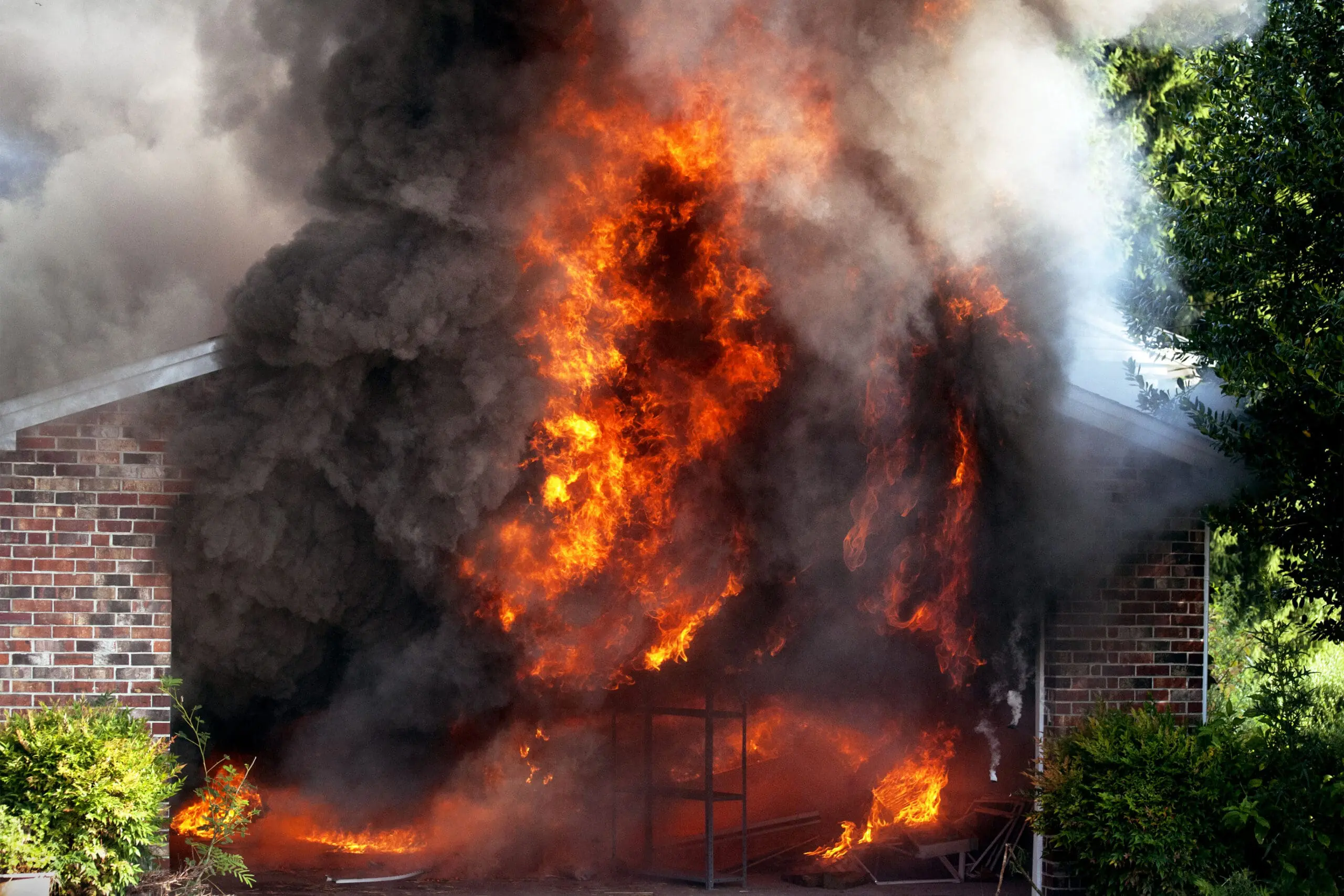
Garages and Driveways
Install weather stripping around and under your garage door to prevent embers from blowing in, and store all combustible and flammable liquids away from ignition sources. Maintain vegetation along driveways, access roads, and other public roads adjacent to your property with a minimum of ten feet of clearance on either side to ensure that you can safely evacuate and that first responders can access your property.
Tarps
A fire resistant tarp can be used to cover woodpiles although a non combustible shed structure is preferred. Woodpiles should be at least 30 feet from structures. A fire resistant tarp covering must be securely fastened and completely cover the woodpile to prevent embers from finding their way to the woodpile during the strong winds associated with wildfires. Be sure to check the tarp’s integrity annually – long term performance when exposed to UV is unknown and may vary from product to product.
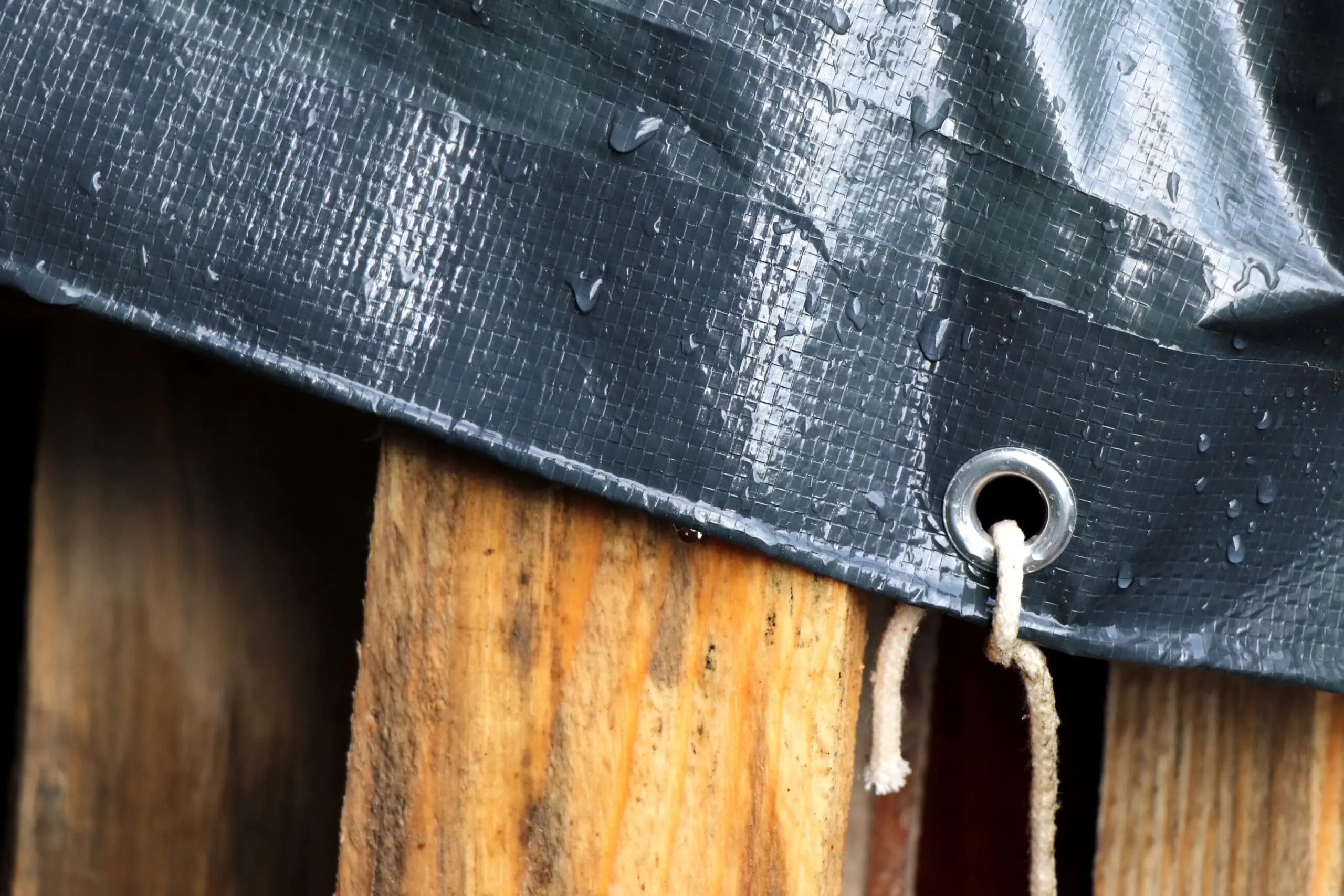
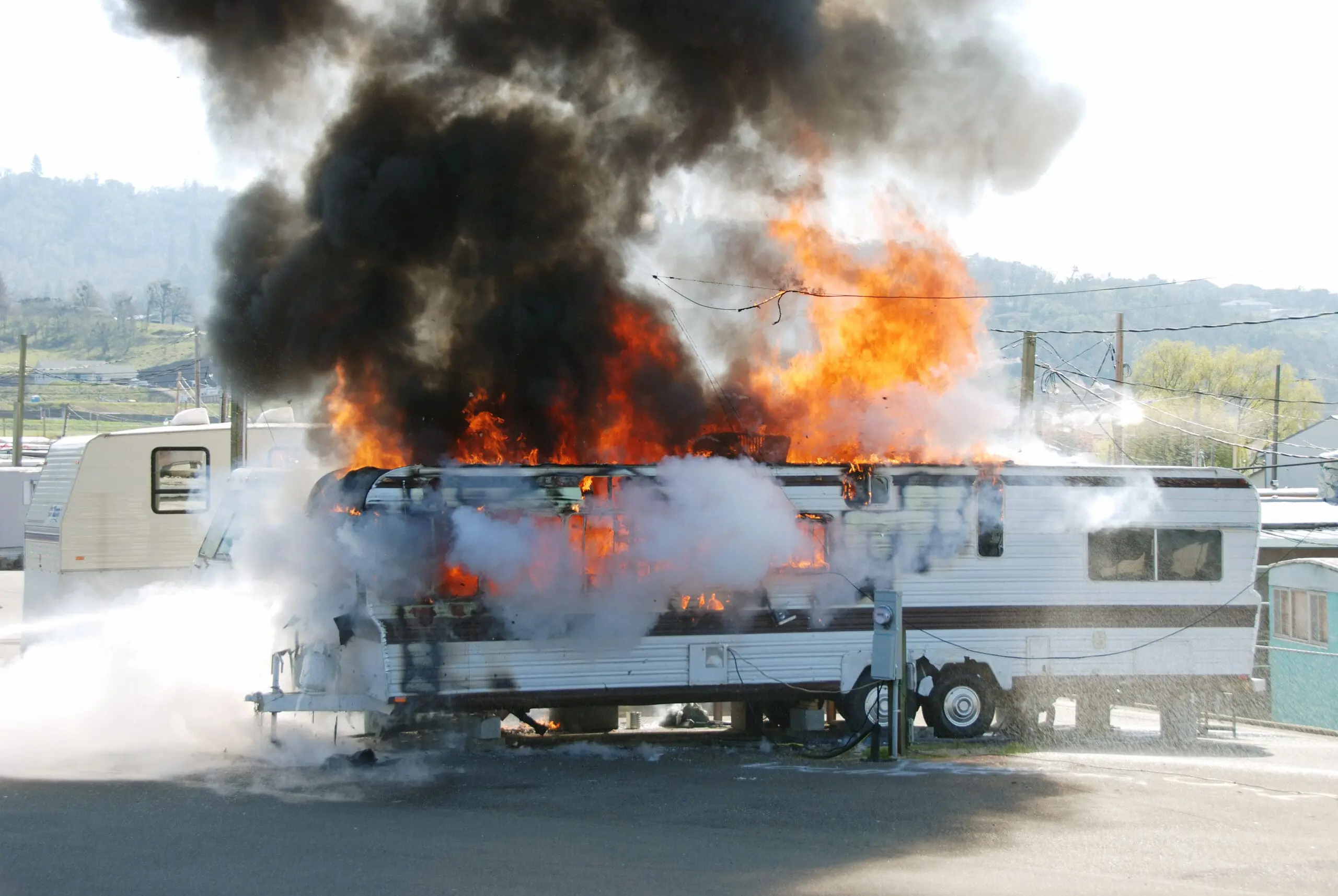
Mobile Homes
Manufactured homes are produced according to the Federal Housing and Urban Development (HUD) safety standards. These national safety standards help make sure that manufactured homes are as safe as site-built homes. Embers are the most common cause of ignition for both site built and manufactured homes. All of the home hardening and fire smart landscape recommendations apply to manufactured homes which often have attached decks and stairs.
Defensible Space
A coupled approach, using a fire-hardened home and good defensible space, is necessary to provide the greatest level of protection. Preparing and maintaining adequate defensible space will guard against flame contact and radiant exposures from nearby vegetation. The Home Ignition Zone is an area approximately 100 feet around a home including the home itself. This is the area where defensible space work needs to take place.
